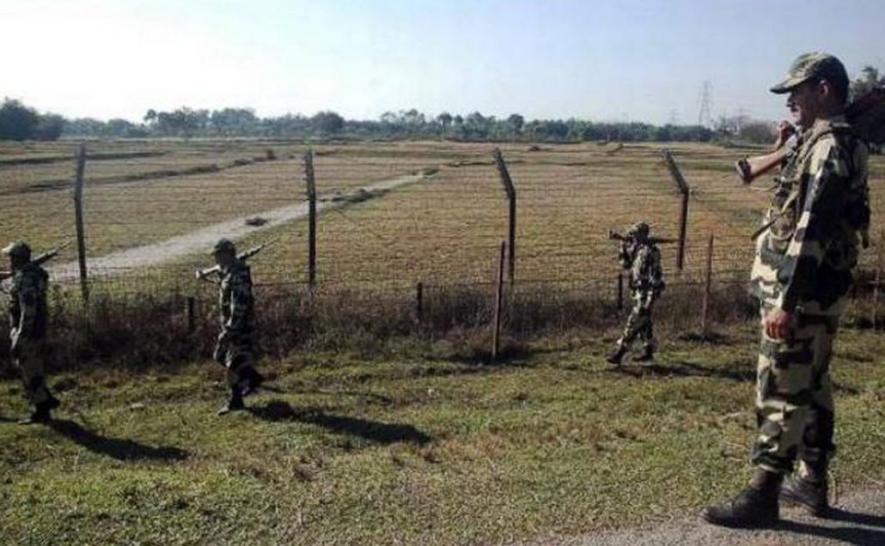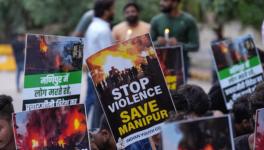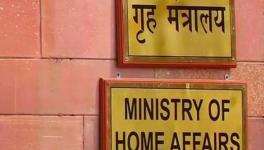Indo-Myanmar Border: Manipur Naga Groups’ ‘Ultimatum’ to Centre

Representational Image. (File Image)
Kolkata: Before the Independence Day on August 15, four Manipur-based Naga organisations will resume and intensify their agitation on the twin issue of Free Movement Regime (FMR) and fencing along the India-Myanmar border if New Delhi does not by then revoke its decision to scrap FMR, stop the ongoing border fencing activity and initiate “meaningful and time-bound dialogue” with Naga civil societies as also affected stakeholders.
The four Manipur-based Naga outfits have marked their communication dated July 22, 2025, as an “Ultimatum” to Prime Minister Narendra Modi, Home Minister Amit Shah, Defence Minister Rajnath Singh and External Affairs Minister S. Jaishankar.
The ‘ultimatum’ once again reminds the Centre that at stake is ‘ancestral Naga homeland’ and that by not consulting the affected indigenous communities, it is violating the UN Declaration on the Rights of Indigenous Peoples, particularly Articles 8, 26 and 36 thereof, which have been “endorsed by India”.
The four Naga outfits are United Naga Council (UNC), All Naga Students’ Association, Manipur (ANSAM), Naga Women’s Union (NWU) and Naga Peoples Movement for Human Rights – South (NPMHR-S). The representation has been signed by N C Lorho and Vareiyo Shatsang, president and general secretary respectively of UNC, Th Angteshang Maring and Isaac Charenamei, president and general secretary respectively of ANSAM, Pricilla Thiumai and A Hoibila, president and general secretary respectively of NWU and Joyson Mazamo, convener of NPMHR-S.
The 20-day ‘ultimatum’ was served on July 22 through the Governor of Manipur. Depending on whether the commencement date is to be taken as July 22 or the next day, the expiry date is either August 10 or 11. It is apparent from the representation that the organisations, in spite of their tough stance, are ready to participate in talks should New Delhi take the initiative.
Although the representation asks New Delhi to “revoke the order/notification” related to FMR immediately, yet the fact remains there is yet no formal order on scrapping FMR. In reality, it is an in-principle decision to be acted upon when deemed necessary.
From published reports, it is seen that the intention of scrapping FMR was first announced by the Union Home Minister in February 24, when the ethnic conflict between the Valley-based Meiteis and the Kuki-Zos inhabiting the Hills had assumed serious proportions.
The situation in Myanmar had become complicated under the military junta. Regular flow of illegal immigrants from the neighbouring country to Manipur and Mizoram, in particular, was adding to the complexities for the Indian authorities, who were pre-occupied with tackling the Manipur ethnic violence.
It is, however, a fact that the Union government considerably tightened FMR between India and Myanmar in the last week of December and cross-border movement of people was restricted to 10 km of the frontier from 16 km. The in-principle decision of doing away with FMR was not executed keeping in view the difficulties faced by the people.
When started as a formal system in the 1950s, it was not officially called FMR; but the arrangement was liberal; there was no question of visas or passports and movement on either side was allowed for up to 40 km. The main consideration then was to allow tribes, who share familial, social and ethnic relations on both sides of the border, to keep in touch with their people.
Therefore, the distance for the movement facility between the 1950s and the last week of December 2024 has been reduced from 40 km to 16 km to 10 km. As border fencing work is gathering momentum, the organisations are apprehensive that with further pace, the scrapping of FMR will receive priority in New Delhi’s scheme of things. Therefore, the threat to intensify agitation on the twin issue has to be viewed in the situation that has evolved since the last week of December 2024.
Under New Delhi’s new strategy, being implemented fast, the entry is to be regulated from 43 designated border crossing points where Assam Rifles is to be in-charge of issuing border passes. Movement from the designated crossing points is to be allowed to holders of border passes and the same will entail ‘single entry of person’ for a stay up to seven days at a time within 10 km of the India-Myanmar border.
On return, the passes are to be deposited at the same crossing point where those were issued. The purposes for which the passes can be utilised are: visiting relatives, tourism, business, sports, official duty, medical treatment, border trade, participation in seminars/meetings/conferences and cultural exchange.
For the record: In a communication dated January 27, 2025, to the Union Home Minister, Aizawl-based Mizo Zirlai Paw (MZP), which is the Mizo students’ association, cautioned the Centre against infringement of the rights of indigenous communities and deplored that their right to maintain cross-border relationship was being ignored by the “world’s largest democracy”. At that time, for all practical purposes, MZP and UNC had moved together though separate representations were made. MZP had urged Shah to reconsider the decision to terminate FMR. In its view, FMR recognised the “deep inter-connectedness of “our communities and facilitated cross-border relationships to thrive over the years.”
India shares a 1,643 km boundary with Myanmar, the break-up of which is: Manipur 398 km, Arunachal 520 km, Nagaland 215 km and Mizoram 510 km. In Manipur, five districts share the boundary. These are Churachandpur, Chandel, Kamjong, Tengnoupal and Ukhrul.
The writer is a Kolkata-based senior freelance journalist.
Get the latest reports & analysis with people's perspective on Protests, movements & deep analytical videos, discussions of the current affairs in your Telegram app. Subscribe to NewsClick's Telegram channel & get Real-Time updates on stories, as they get published on our website.























